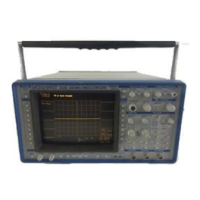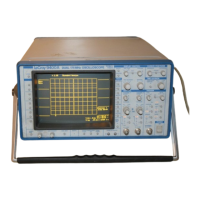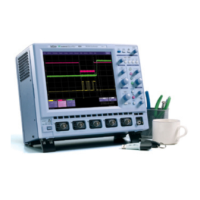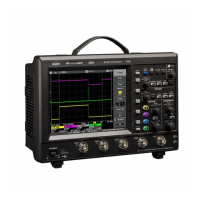C–20
Appendix C
The highest point in the power spectrum can be 3.92 dB lower
(1.57 times) when the source frequency is halfway between two
discrete bin frequencies. This variation of the spectrum
magnitude is called the picket fence effect (the loss is called the
scallop loss).
All window functions compensate this loss to some extent, but
the best compensation is obtained with the Flat Top window.
Power Spectrum The power spectrum (V
2
) is the square of the magnitude
spectrum.
The power spectrum is displayed on the dBm scale, with 0 dBm
corresponding to:
Vref
2
= (0.316 Vpeak)
2
,
where Vref is the peak value of the sinusoidal voltage, which is
equivalent to 1 mW into 50 Ω.
Power Density Spectrum The power density spectrum (V
2
/Hz) is the power spectrum
divided by the equivalent noise bandwidth of the filter in hertz.
The power density spectrum is displayed on the dBm scale, with
0 dBm corresponding to (Vref
2
/Hz).
Sampling Frequency The time-domain records are acquired at sampling frequencies
dependent on the selected time base. Before the FFT
computation, the time-domain record may be decimated. If the
selected maximum number of points is lower than the source
number of points, the effective sampling frequency is reduced.
The effective sampling frequency equals twice the Nyquist
frequency.
Scallop Loss Loss associated with the picket fence effect.
Window Functions All available window functions belong to the sum of cosines
family with one to three non-zero cosine terms:
W a
k
N
m k N
k m
m
m M
=
≤ <
=
= −
∑
0
1
2
0cos
p
,
where: M = 3 is the maximum number of terms, a
m
are the
coefficients of the terms, N is the number of points of the
decimated source waveform, and k is the time index.
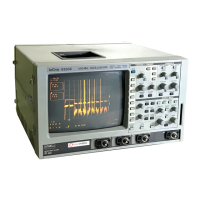
